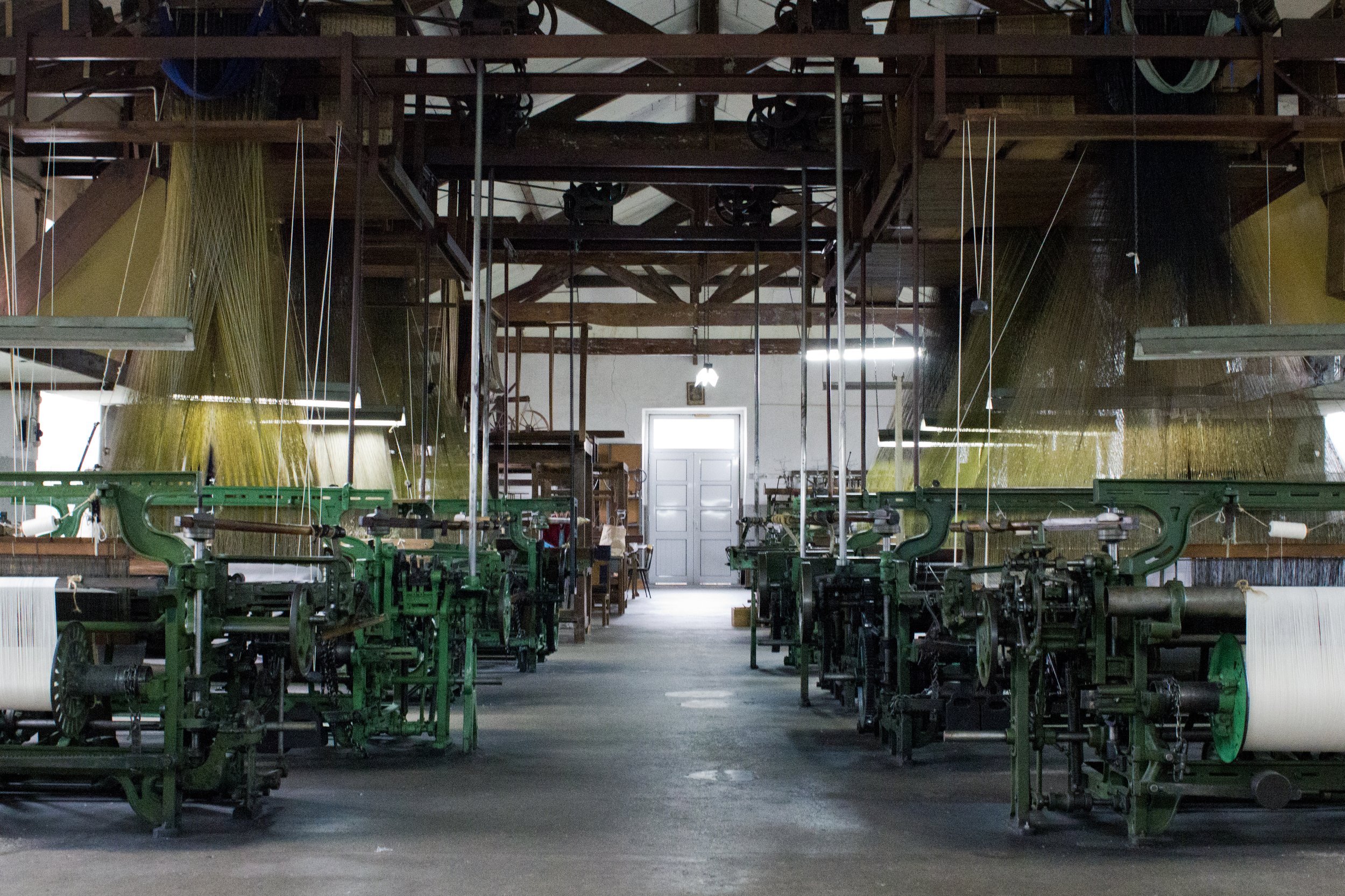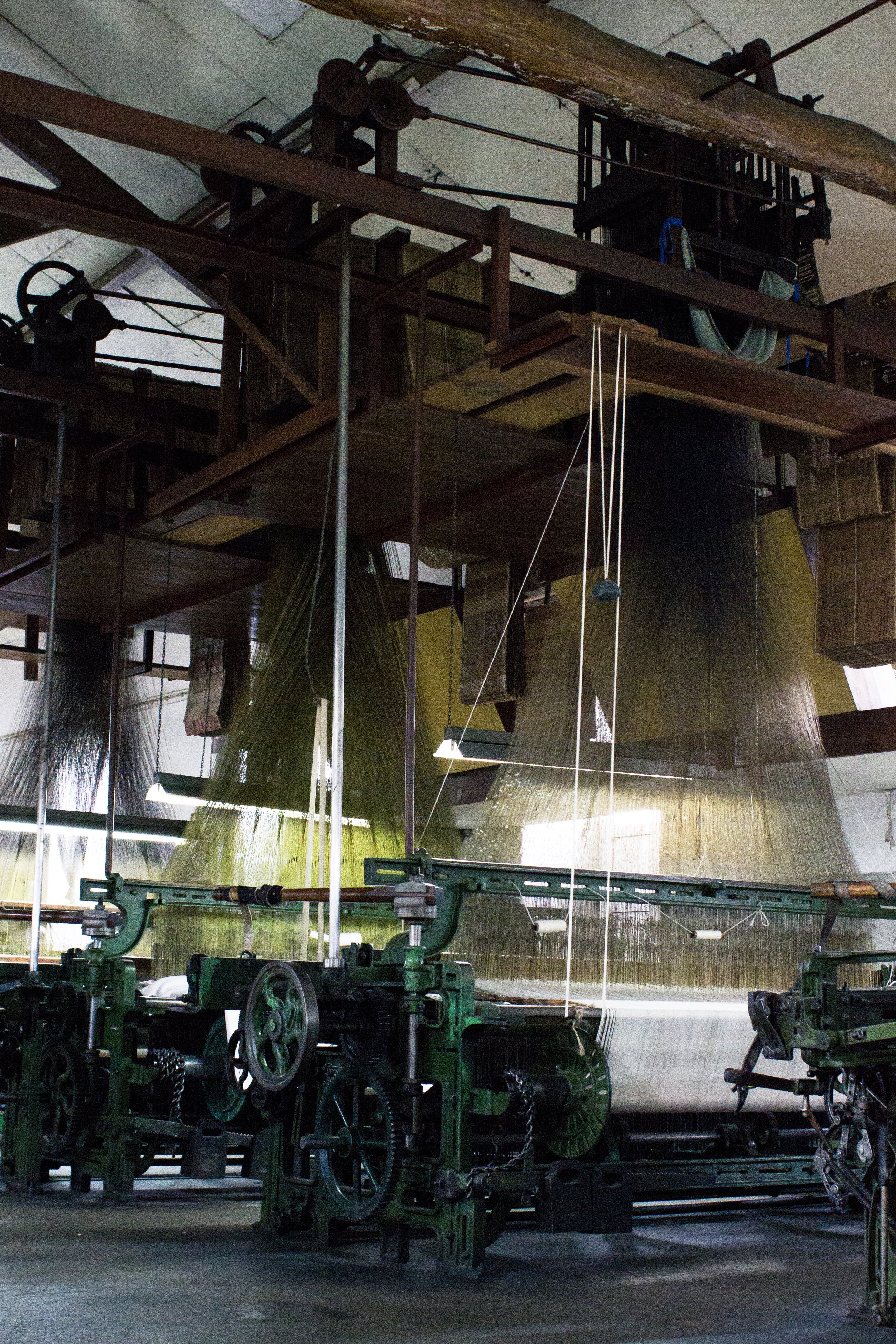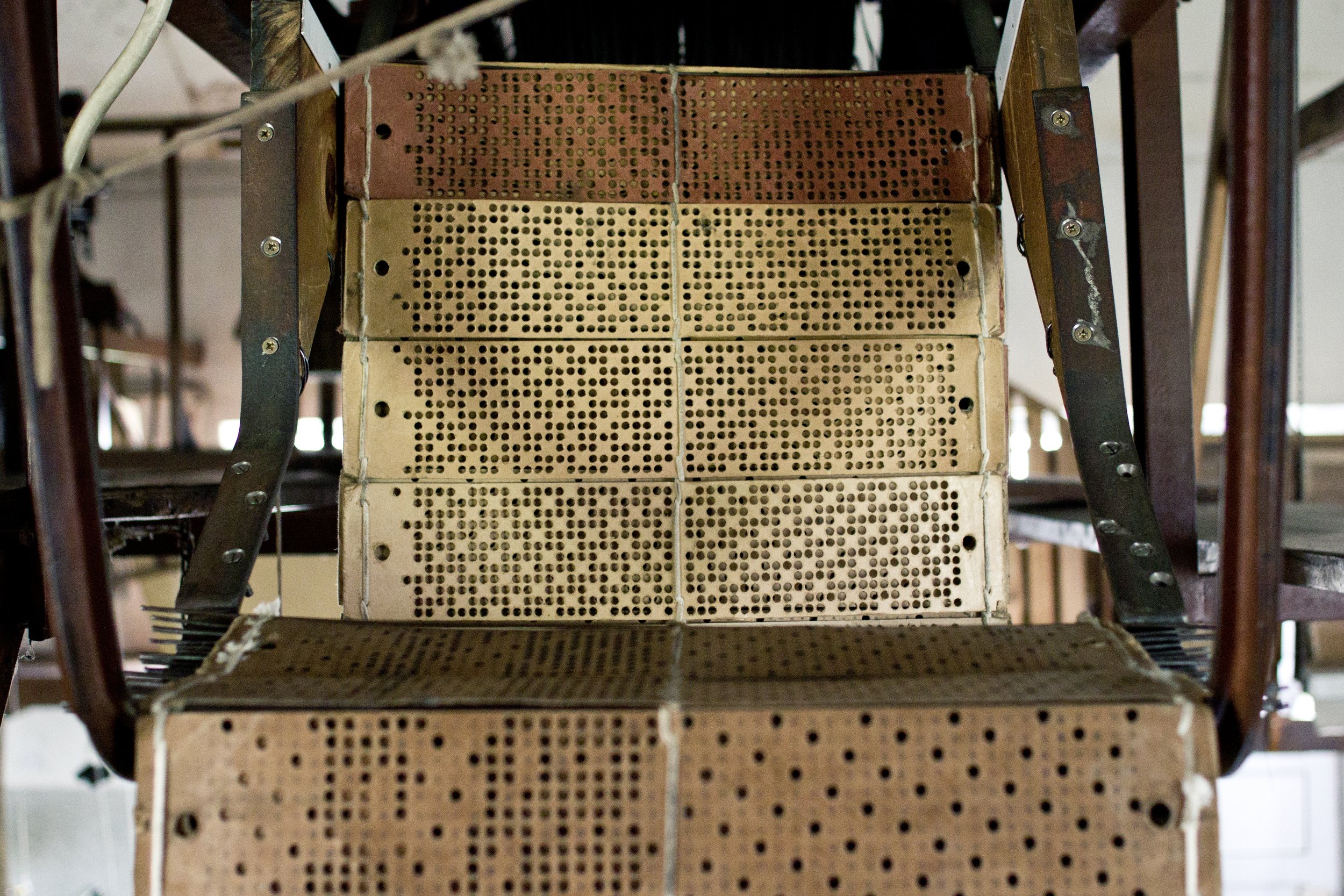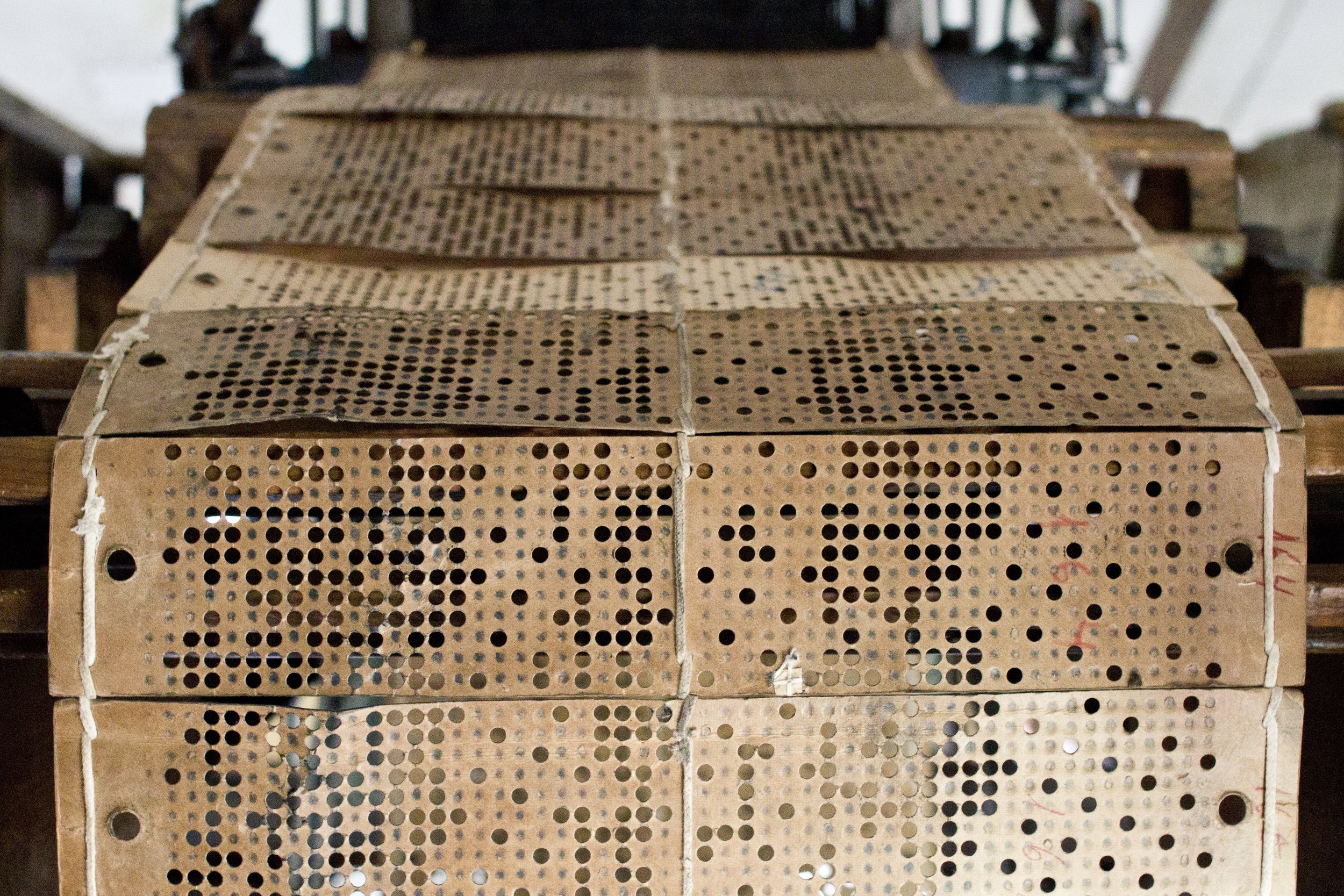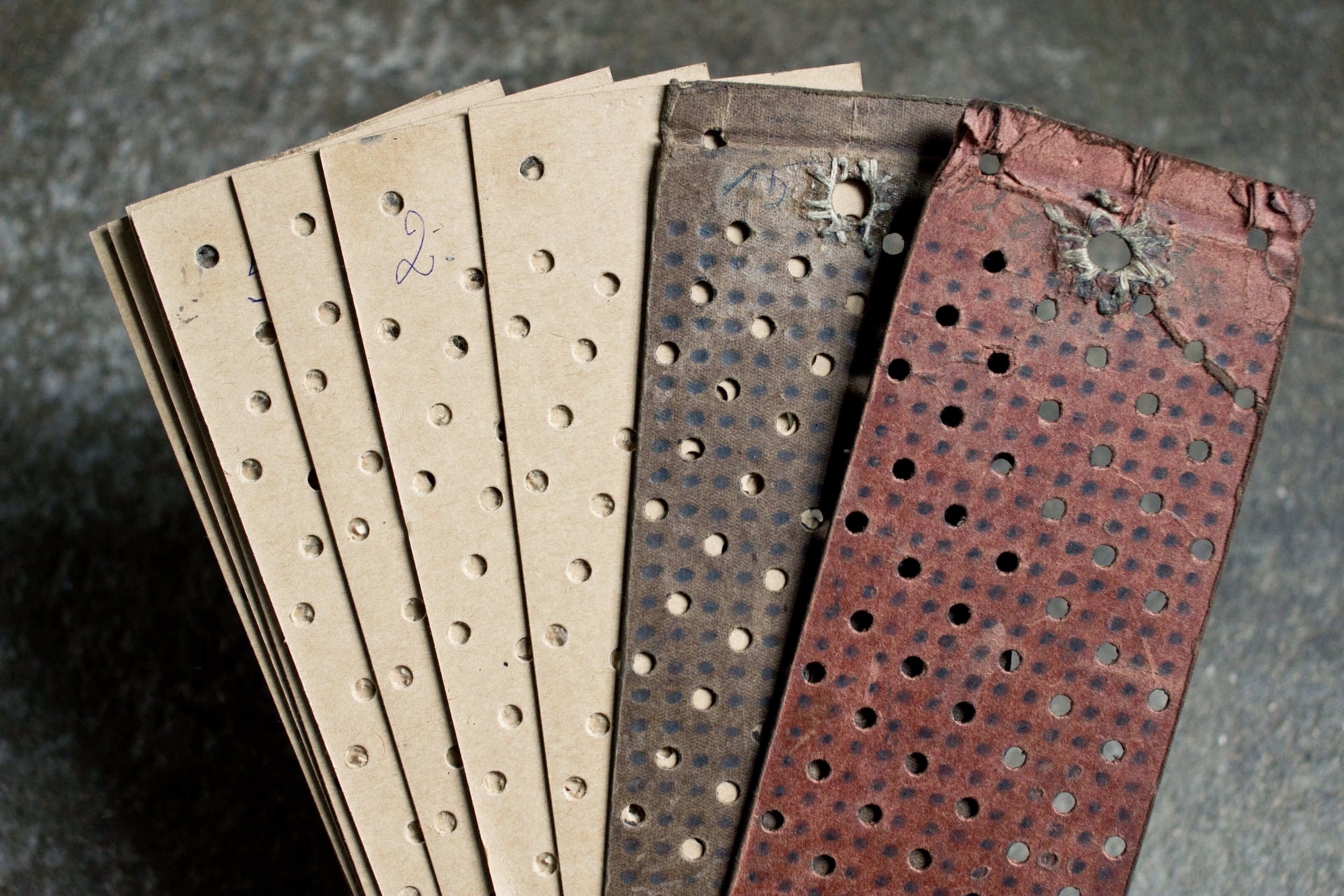Instituto Monsenhor Airosa
Fiar e Tecer são duas actividades que exercem sobre mim um fascínio fantástico. Repare-se que [ainda] não sei fazer nenhuma das duas, mas quando vejo a fibra a transformar-se em fio, seguida do fio em tecido não consigo deixar de pensar que têm uma aura mística qualquer que me deixa hipnotizada.
Quando fotografei o Linhal, em Julho do ano passado, fiquei a saber que o linho lá produzido era enviado para ser tecido no Instituto Monsenhor Airosa, em Braga, sendo depois devolvido para serem confeccionados os trajes tradicionais do Grupo Folclórico da Corredoura. Tenho conhecimento de alguns artesãos que têm e trabalham com teares artesanais, mas ainda não tinha visitado nenhum local com uma estrutura destas. Os teares são mecânicos, mas funcionam num sistema misto entre o completamente automatizado e o completamente artesanal.
As tecedeiras já são poucas, não é de admirar, e para que as máquinas não enferrujem, a D.Isabel, tecedeira-mor, faz rodar os trabalhos cada quinze dias de modo a manter tudo funcional.
Trabalham com linho, principalmente, mas também com lã e algodão. Fazem trabalhos por iniciativa própria, para comercializar, mas também aceitam encomendas específicas de fora, e aí até trabalham com o fio que lhes for fornecido. Não ficou por expressar a dificuldade que têm tido para conseguir fornecimento de linho e algodão. O linho vem de Itália, porque se tornou impossível obtê-lo em Portugal há já muitos anos. O algodão está cada vez mais difícil de obter, não é difícil perceber porquê. A maior parte dos desenhos reproduzidos ainda são os originais criados pelo Monsenhor Airosa, guardados desde sempre num dos armários do centro, e traduzidos para serem tecidos através dos cartões perfurados, em linguagem de zeros e uns.
Nisto tudo, para mim, a D.Isabel é a personagem-chave que faz tudo funcionar como deve ser. Faz exactamente hoje, dia 17 de Março, 54 anos que lá entrou com 15 anos apenas, e desde então que vive no meio dos teares. Estive com ela 3 horas e fiquei a desejar que a tecnologia chegasse ao ponto em que fosse possível transferir integralmente a informação contida no cérebro desta mulher. Acho admirável, já que eu fico baralhada só de olhar para o emaranhado de fios que sobe e desce para fazer o trabalho todo.
Spinning and Weaving are two things that have this mesmerizing power over me. I don’t know how to do any of the two, yet, but when I see the fiber turning into yarn, and then the yarn into fabric I can’t help thinking that there’s a mystical aura about it that hypnotizes me.
When I photographed the Linen process, last July, I was told that their linen was sent to the Instituto Monsenhor Airosa, in Braga, to be woven into fabric that then would be sent be back to make the typical clothes of the Folclorical Group. I know of a few artisans that have artisanal looms, but I had never visited a place with a structure like this. Their looms are mechanic, but they work in between the completely automatized and completely handweaved.
There only a few women weavers, not a surprise, and to prevent the looms from rusting, Miss Isabel rotates the work every two weeks in order to keep the machines working.
They work mainly with linen, but also with cotton and wool. They work on their own, but also accept orders from the outside and even work with whatever yarn is supplied. The difficulty of finding a steady supply of linen and cotton was obvious. The linen comes from Italy, since it became impossible to find in Portugal many years ago, and they are struggling to buy cotton and it’s not hard to know why. Most of the patterns were designed by Monsenhor Airosa, kept in paper and translated to the looms in a language of zeros and ones using these punched cardboards.
In the middle of all this, the most relevant character would be Miss Isabel. Today, 17th of March, it’s the 54th birthday of her coming to this institution, at the age of fifteen, and she’s been living amidst the looms ever since. I spent only three hours with her and came home wishing that technology was advanced to a point that allowed me to download all the information in this woman’s brain. Along with the weaving, these women are also responsible for maintaining and repairing the looms and other machines. Set in a corner, they have all the tools and parts necessary to repair anything right there. If a mechanic is necessary to work on something heavier, he still needs miss Isabel to run the operation and make sure that everything gets assembled correctly. For me this is admirable, considering that I get confused just by looking at the tangled threads that go up and down to do all the work, let alone assembling them.
Instituto Monsenhor Airosa
Rua Monsenhor Airosa
4704-537 Braga - Portugal
+351 253 204 150
geral@artesanato-airosa.pt
www.artesanato-airosa.pt








